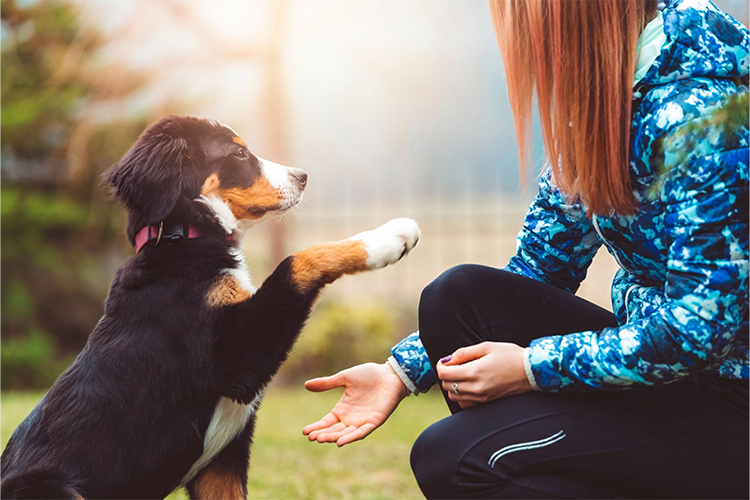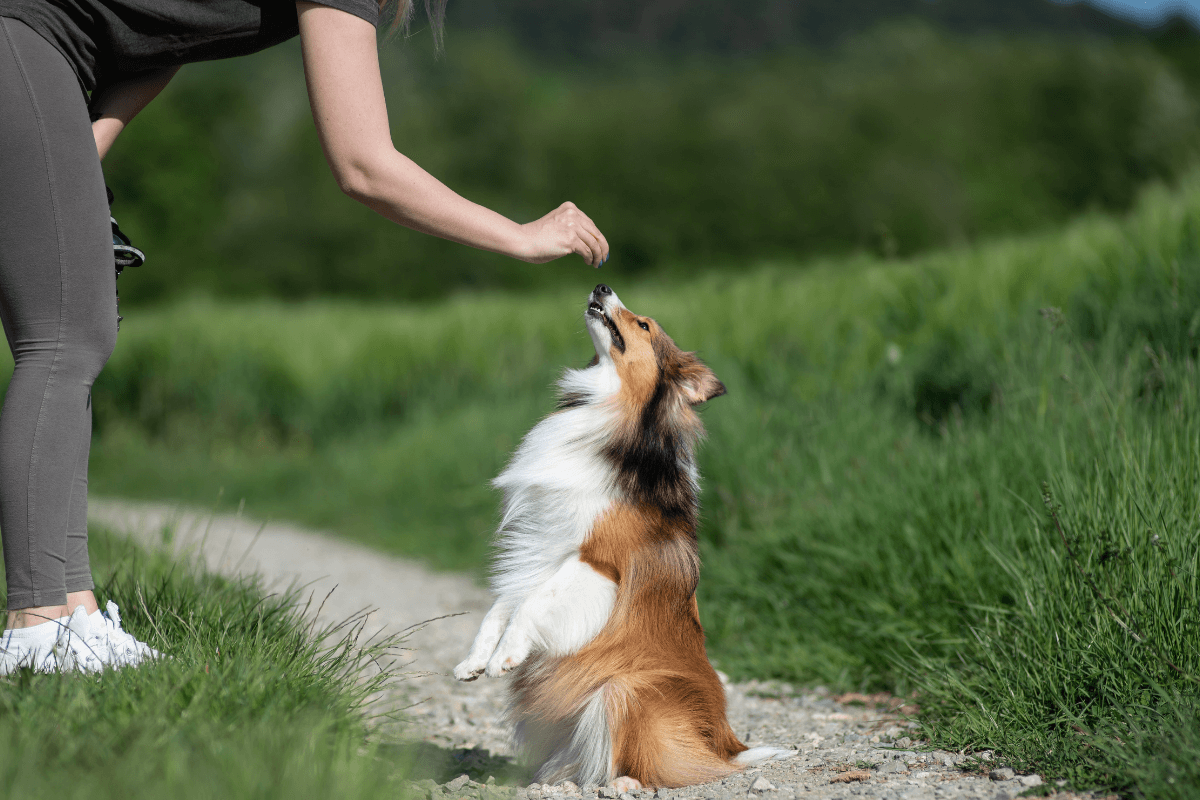The Ultimate Overview to Positive Reinforcement in Dog Training
The Ultimate Overview to Positive Reinforcement in Dog Training
Blog Article
Essential Tips for Effective Dog Training: A Guide for Family Pet Owners
Effective dog training is a multifaceted procedure that calls for a calculated approach customized to both the pet dog's temperament and the owner's goals. Key components such as establishing constant commands, using favorable support, and assisting in very early socialization play vital roles in promoting a well-adjusted canine friend. Lots of family pet owners experience difficulties that can impede development, leading to irritation and uncertainty. Comprehending exactly how to browse these obstacles can substantially enhance the training experience, eventually changing the connection in between proprietor and pet dog. What are the crucial techniques that can be utilized to make sure success in this endeavor?
Recognizing Dog Behavior
Understanding canine actions is vital for efficient training and cultivating an unified connection between pooches and their owners. Canines communicate mostly via body language, articulations, and activities, making it crucial for proprietors to translate these signals accurately. Identifying a dog's position, tail position, and ear orientation can supply understandings right into its emotion. As an example, a wagging tail does not always indicate joy; it can also signal exhilaration or stress and anxiety.

Socialization plays a considerable role in pet dog behavior; direct exposure to various environments, people, and various other pets can substantially affect a dog's character. Furthermore, variables such as type qualities and individual character ought to direct training approaches, as some types may have specific behavior characteristics that demand tailored strategies. By recognizing these components, owners can create a supportive environment that motivates favorable habits, resulting in successful training results and a much deeper bond with their pets.
Establishing Constant Commands
Effective communication with your pet dog starts with establishing regular commands. This fundamental aspect of training is vital for fostering understanding between you and your animal. Uniformity in the commands you use makes certain that your canine can dependably connect certain words or phrases with the preferred habits.
When selecting commands, pick clear, distinctive words that are easy to differentiate and say from each other. Avoid making use of similar-sounding commands that might perplex your canine. For example, utilizing "sit" and "remain" is proper, yet "rest" and "hit" might result in misconceptions.
Furthermore, keep the exact same tone and volume for each and every command. Pets are sensitive to vocal cues, so varying your tone can create confusion.
It is just as vital to make certain that all relative are on the exact same page concerning the commands utilized. A united front in command use will protect against mixed signals and reinforce the understanding process.
Positive Reinforcement Techniques
The power of favorable reinforcement in pet dog training lies in its capacity to encourage wanted habits via benefits and appreciation. This strategy is grounded in the concept that behaviors followed by desirable outcomes are more probable to be duplicated. By integrating positive support right into your training regimen, you can effectively shape your pet's habits in a useful way.
To apply favorable reinforcement, it's necessary to determine what encourages your pet dog, whether it be deals with, toys, or verbal appreciation. When your dog does a desired action, such as remaining on command, instantly award them with a treat or love. This association between the command and the favorable result strengthens their understanding.
It's important to timing the rewards appropriately; supplying the support within secs of the desired actions assists your pet make the link (dog training). Furthermore, uniformity is vital-- ensure that all family members utilize the very same commands and benefit systems to stay clear of confusion

Gradually, you can minimize the frequency of treats as your dog finds out the habits, transitioning to praise or intermittent benefits. This approach not only promotes a solid bond in between you and your pet dog however additionally advertises a favorable understanding atmosphere, making educating a delightful experience for both.
Socialization and Communication
Constantly subjecting your canine to a selection of environments, people, and various other pets is critical for their social growth. Socializing must begin early, preferably throughout the important home window of 3 to 14 weeks, when young additional resources puppies are most receptive to brand-new experiences. Older pets can likewise profit from continuous socializing efforts.
Introduce your dog to different settings, such as parks, pet-friendly stores, and metropolitan locations. This exposure helps them adapt to various stimuli, lowering anxiety and fear feedbacks. Urge positive communications with various other dogs and individuals, making certain that these encounters are risk-free and regulated to cultivate self-confidence.
Use organized playdates with courteous pet dogs, as this can enhance your canine's social skills and instruct them ideal habits. Obedience courses and training sessions also provide excellent possibilities for socializing, permitting your dog to engage with others in a monitored environment.
Monitor your canine's body movement during communications, as this will help you evaluate their convenience degree. Gradually raise exposure to more challenging situations while making certain that each experience declares. A well-socialized pet is more most likely to exhibit well balanced behavior, making them a pleasure to have in any type of setting.
Attending To Usual Training Difficulties
Every pet dog owner will experience training difficulties eventually, no matter of their canine's age or socializing degree. Recognizing typical problems such as stubbornness, diversions, and terror can assist in establishing reliable methods for improvement.

Disturbances throughout training sessions can hinder emphasis. To fight this, begin training in a silent atmosphere with minimal stimulations. Slowly introduce interruptions as the canine ends up being extra skillful in commands. Short, constant training sessions are likewise effective in maintaining attention.
Terror can hinder a pet dog's discovering process. Progressive desensitization to the source of worry, coupled with favorable reinforcement, can help reduce anxiety. Perseverance is critical; never force a dog into a situation that causes distress, as this might intensify the issue.
Inevitably, understanding and addressing these usual challenges with an organized strategy will click this link certainly cultivate an extra effective training experience, enhancing the bond in between pet and proprietor while advertising effective understanding.
Final Thought
In summary, effective canine training counts on a comprehensive understanding of canine actions, the facility of constant commands, and the application of positive reinforcement techniques. Socializing plays an essential duty in establishing well-adjusted pet dogs, while attending to typical training challenges calls for perseverance and versatility. By executing these crucial methods, pet owners can cultivate a solid bond with their canines and promote preferable behaviors, eventually causing original site a harmonious connection in between humans and their canine companions.
Comprehending pet dog actions is important for effective training and cultivating a harmonious partnership in between canines and their proprietors.Socializing plays a substantial role in canine behavior; direct exposure to different environments, individuals, and various other pets can considerably affect a canine's character.The power of positive reinforcement in pet dog training lies in its ability to urge desired habits via benefits and appreciation. By integrating positive reinforcement right into your training routine, you can efficiently shape your dog's habits in a constructive way.
In recap, effective pet training relies on a comprehensive understanding of canine behavior, the establishment of regular commands, and the application of favorable support techniques.
Report this page